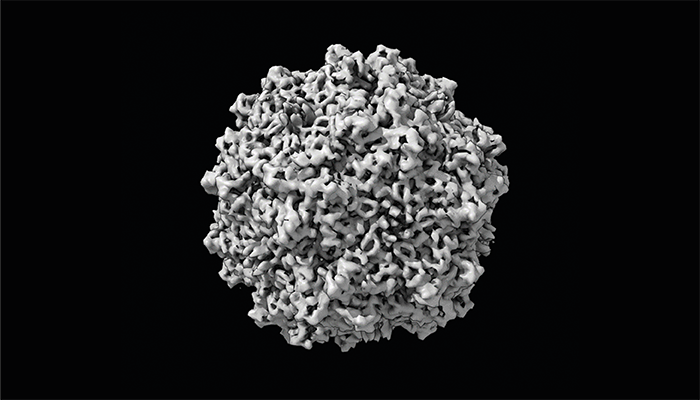
Some gene therapy treatments use modified adeno-associated viruses (AAVs) like the one shown here to deliver therapeutic genetic material into a patient’s cells. Credit: Thomas Cleveland (NIST)
Accurate quantification of AAV vectors is essential for ensuring the safety and efficacy of gene therapy treatments, which rely on these modified viruses to deliver therapeutic genetic material to cells. Which is why the National Institute of Standards and Technology (NIST), the National Institute for Innovation in Manufacturing Biopharmaceuticals (NIIMBL), and the U.S. Pharmacopeia (USP), set out to compare measurement techniques across six industry laboratories in the United States and Europe.
In the study, SEC-MALS demonstrated high accuracy and precision in measuring AAV samples across multiple laboratories, making it a reliable choice for routine analysis.
Sedimentation velocity-analytical ultracentrifugation (SV-AUC), traditionally considered the "gold standard" for AAV analysis, was less consistent than expected, though it provided detailed insights into the distribution of full and empty viral particles. The study suggests that standardizing SV-AUC protocols could improve its reproducibility and align its performance more closely with SEC-MALS.
“SEC-MALS could be implemented as a general method with [SV-AUC] being used for more complete analysis as necessary,” the researchers noted.
In contrast, PCR-ELISA exhibited significant variability in results, with differences observed both within individual laboratories and across facilities.
“Everyone may think they are doing the same thing when conducting a PCR-ELISA test, but they often aren't,” said NIST chemical engineer Wyatt N. Vreeland in a press release. “It’s like a recipe for the same chocolate cake – you can give someone the same ingredients, but when you use different equipment to make them or bake them in different ovens, the cakes don’t turn out the same.”
The study recommends further development and standardization before PCR-ELISA can be reliably used for quantitative measurements.
Ultraviolet spectrophotometry (A260/A280), another commonly used method, was found to have limitations in distinguishing between partially filled and fully empty capsids, leading to potential inaccuracies in AAV characterization.
The researchers now plan to create standardized operating procedures (SOPs) for SV-AUC to enhance its reproducibility.
